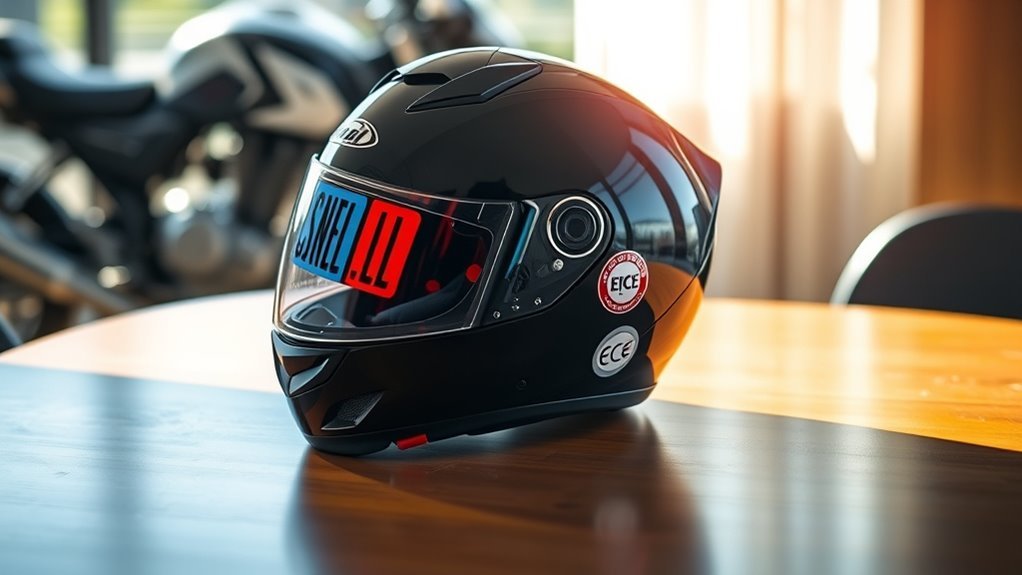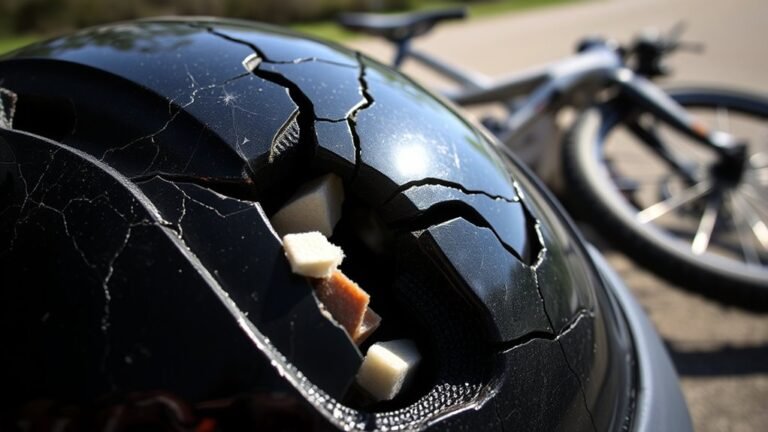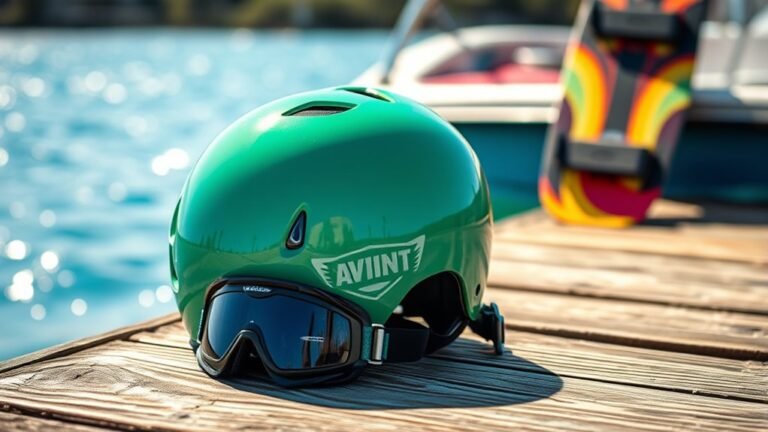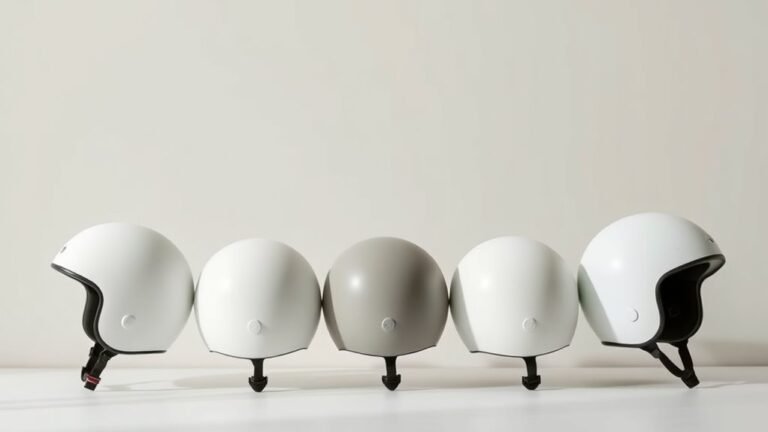Snell vs. ECE Helmet Safety Ratings Explained
When comparing Snell and ECE helmet safety ratings, you’ll find essential differences in their testing methods and criteria. Snell certification, established in 1957, focuses on rigorous performance standards, emphasizing impact absorption and penetration resistance. In contrast, ECE certification includes additional evaluations like field of vision and retention system performance. Both certifications push innovation in helmet design for enhanced rider protection. Understanding these distinctions can help you make an informed choice; further insights await.
Overview of Snell Certification
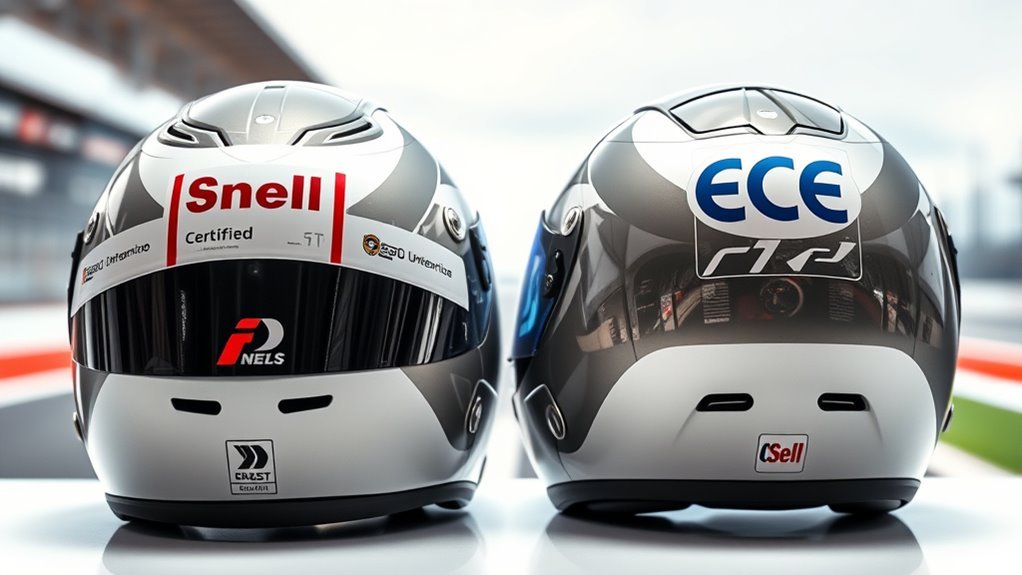
Snell certification serves as a benchmark in helmet safety, ensuring that helmets meet rigorous performance standards. Established in 1957, Snell’s history reflects a commitment to advancing safety within motorsports. The certification process involves extensive testing, including impact absorption, retention system strength, and penetration resistance. Helmets undergo a series of controlled impacts at various velocities to simulate real-world conditions, ensuring they can withstand the forces encountered in accidents. You’ll find that Snell-certified helmets are designed to provide superior protection, allowing you the freedom to ride with confidence. By adhering to these stringent standards, Snell certification not only enhances safety but also promotes innovation in helmet design, empowering riders to choose gear that prioritizes their well-being.
Overview of ECE Certification
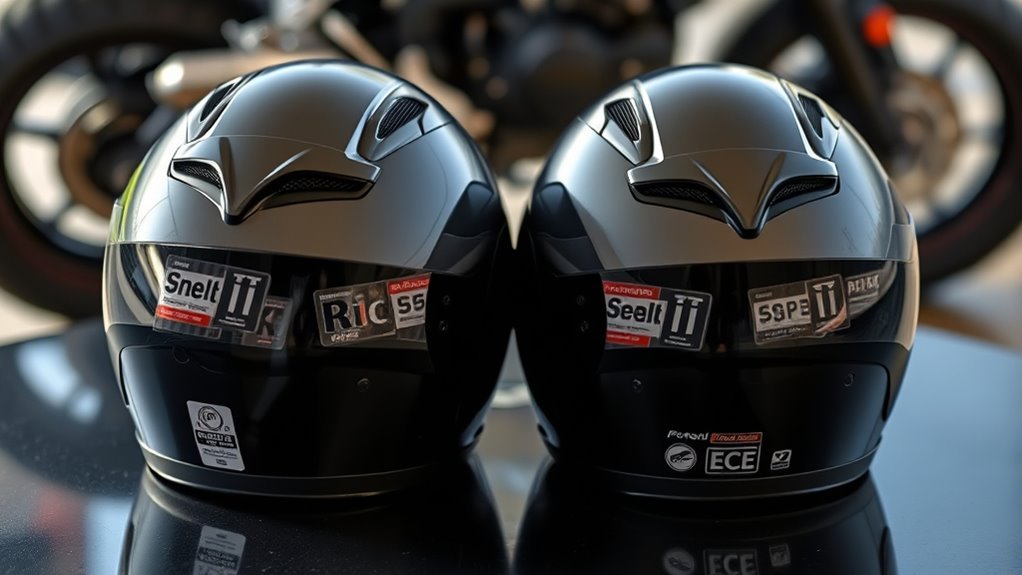
While Snell certification sets a high standard for helmet safety, the ECE (Economic Commission for Europe) certification offers an alternative approach that’s widely recognized in Europe and beyond. ECE standards focus on an extensive set of safety requirements, ensuring that helmets provide adequate protection in various conditions. These standards encompass impact resistance, field of vision, and retention system performance, reflecting a commitment to rider safety. When you choose an ECE-certified helmet, you’re opting for a product that meets rigorous testing protocols tailored to real-world scenarios. This certification not only promotes safety but also enhances your freedom on the road, knowing you’re equipped with gear designed to withstand the demands of riding. Understanding these standards helps you make informed choices for your safety and enjoyment.
Testing Methods and Criteria
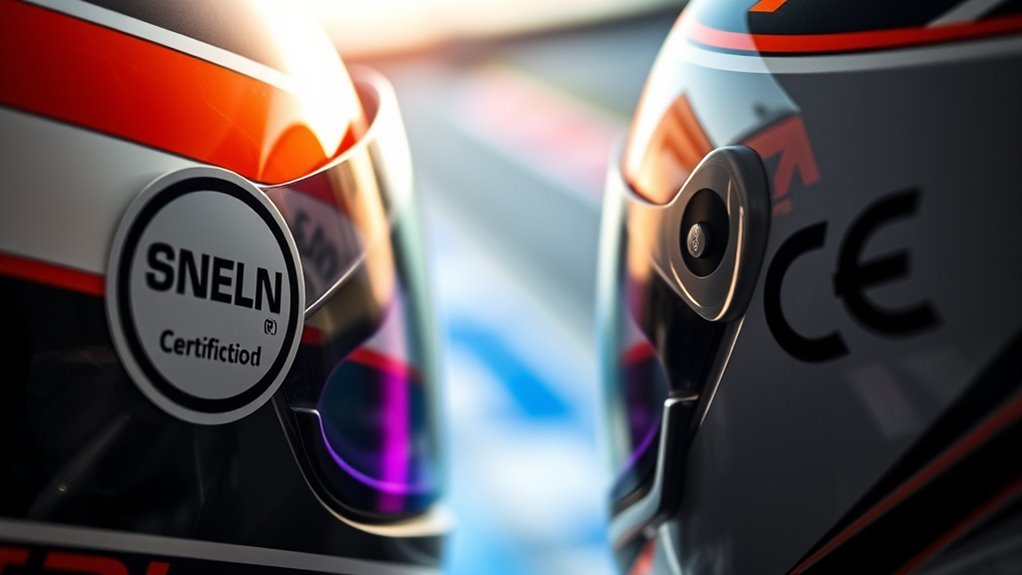
When evaluating helmet safety, understanding the testing methods and criteria used by different certification bodies is vital. Each organization employs distinct testing protocols to guarantee helmets meet rigorous safety standards. Here are three key aspects to take into account:
Understanding helmet safety testing methods is crucial for ensuring rigorous protection standards are met.
- Impact Testing: Helmets undergo drop tests from varying heights to assess their ability to absorb shock.
- Penetration Resistance: Testing measures how well a helmet can withstand sharp objects, guaranteeing the rider’s head remains protected.
- Retention System Evaluation: This examines how effectively the helmet stays secured during an impact, which is critical for overall safety.
Impact on Helmet Design
As helmet safety standards evolve, manufacturers are increasingly forced to adapt their designs to meet stringent testing criteria. This results in significant design innovations focused on enhancing safety features that protect riders effectively. For instance, helmets now incorporate advanced materials like multi-density foams and impact-absorbing liners to distribute force more evenly upon impact. Additionally, aerodynamic shapes are being refined to minimize drag without compromising protection. You’ll also notice many helmets featuring enhanced ventilation systems, improving comfort without sacrificing structural integrity. These innovations aren’t just about compliance; they represent a commitment to rider safety, ensuring that you can enjoy your freedom on the road while wearing gear designed to protect you in the event of an accident.
Choosing the Right Helmet for Your Needs
How do you find the right helmet that balances safety, comfort, and style? Selecting a helmet involves understanding its features and the safety standards it meets. Here are three key factors to evaluate:
- Safety Ratings: Look for helmets that have passed Snell or ECE standards, ensuring they provide adequate protection during impacts.
- Fit and Comfort: A helmet should fit snugly without being uncomfortable. Adjustable padding and ventilation can enhance your riding experience.
- Weight and Design: Lightweight materials can improve comfort during long rides, and a stylish design can reflect your personal freedom.
Frequently Asked Questions
Are Snell and ECE Certifications Recognized Worldwide?
Yes, Snell and ECE certifications are recognized worldwide, but their acceptance varies. Snell focuses on rigorous testing for high-performance helmets, while ECE emphasizes broader safety standards suitable for everyday use. You’ll find that in some regions, one certification might be preferred over the other. Understanding these certification differences can help you choose the right helmet for your needs, ensuring you enjoy your freedom while riding safely, no matter where you are.
How Often Are Snell and ECE Standards Updated?
Snell and ECE standards are updated periodically to reflect advancements in helmet testing and safety technology. Typically, Snell revises its standards every five years, ensuring they incorporate the latest research and innovations. ECE updates tend to follow a similar timeline, although they may adapt more quickly to emerging safety advancements. Staying informed about these updates is vital for you if you value freedom and safety in your riding experience.
Which Certification Is Preferred for Racing Helmets?
For racing helmets, the preferred certification is often Snell. This is due to its rigorous testing standards, which guarantee that the helmet features advanced protection against impacts and penetration. While ECE certification is also respected, Snell’s focus on high-speed impacts makes it more suitable for racing environments. You should prioritize certification importance when selecting a helmet, as it directly affects your safety and performance on the track. Choose wisely to enjoy the freedom of racing confidently.
Can a Helmet Have Both Snell and ECE Certifications?
Yes, a helmet can have both Snell and ECE certifications, providing dual certification that enhances safety. This means it’s undergone rigorous helmet testing under both standards, ensuring it meets high performance and protection levels. By choosing a dual-certified helmet, you’re not only maximizing your safety but also embracing freedom on the road, knowing your gear has been evaluated against multiple benchmarks. It’s a smart choice for those who prioritize their well-being while riding.
What Happens if a Helmet Fails Certification Tests?
If a helmet fails certification tests, it can’t be legally sold as a safety-approved product. This means it won’t meet the necessary helmet safety standards, potentially putting you at risk during a crash. The certification consequences also extend to liability issues for manufacturers and retailers. You’d want to guarantee your helmet has passed all required tests, as wearing subpar gear can jeopardize your freedom on the road due to inadequate protection.
